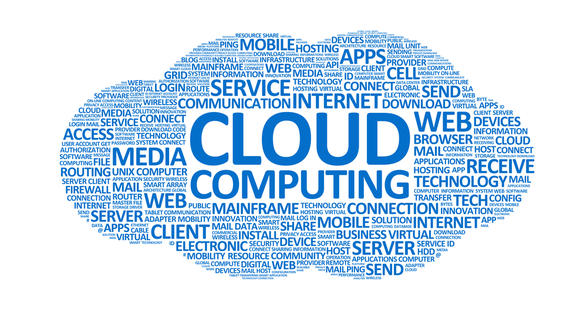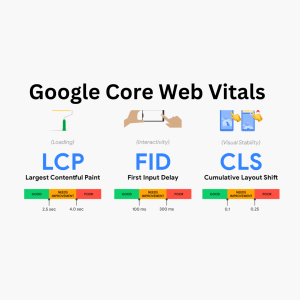Cloud computing
Cloud computing is a new form of Internet-based computing that provides shared computer processing resources and data to computers and other devices on demand. It is a model for enabling ubiquitous, on-demand access to a shared pool of configurable computing resources (e.g., computer networks, servers, storage, applications and services), which can be rapidly provisioned and released with minimal management effort. Basically, Cloud computing allows the users and enterprises with various capabilities to store and process their data in either privately owned cloud , or on a third-party server in order to make data accessing mechanisms much more easy and reliable. Data centers that may be located far from the user–ranging in distance from across a city to across the world. Cloud computing relies on sharing of resources to achieve coherence and economy of scale, similar to a utility (like the electricity grid) over an electricity network.
Up-front infrastructure costs
Advocates claim that cloud computing allows companies to avoid up-front infrastructure costs (e.g., purchasing servers). As well, it enables organizations to focus on their core businesses instead of spending time and money on computer infrastructure. Proponents also claim that cloud computing allows enterprises to get their applications up and running faster, with improved manageability and less maintenance, and enables information technology (IT) teams to more rapidly adjust resources to meet fluctuating and unpredictable business demand. Cloud providers typically use a “pay as you go” model. This will lead to unexpectedly high charges if administrators do not adapt to the cloud pricing model.
In 2009, the availability of high-capacity networks, low-cost computers and storage devices as well as the widespread adoption of hardware virtualization, service-oriented architecture, and autonomic and utility computing led to a growth in cloud computing. Companies can scale up as computing needs increase and then scale down again as demands decrease. In 2013, reports indicated that cloud computing had attained high demand as a service or utility owing to its advantages of offering high computing power, affordable services, superior performance, scalability, accessibility, and availability. Some cloud vendors were experiencing growth rates of 50% per year. However, despite still being in a stage of infancy, cloud computing has pitfalls that require addressing to enhance the reliability and user-friendliness of its services.
Cloud computing exhibits the following key characteristics:
- Agility for organizations may be improved, as cloud computing may increase users’ flexibility with re-provisioning, adding, or expanding technological infrastructure resources.
- Cost reductions are claimed by cloud providers. The public-cloud delivery model converts capital expenditures (e.g., purchasing servers) into operational expenditure. This purportedly lowers barriers to entry since infrastructure is typically provided by a third party and does not need to be purchased for one-time or infrequent intensive computing tasks. Pricing on a utility computing basis is “fine-grained,” with usage-based billing options. Additionally, implementation of projects that utilize cloud computing requires fewer in-house IT skills. The e-FISCAL project’s state-of-the-art repository contains several articles looking into cost aspects in more detail, most of them concluding that costs savings depend on the type of activities supported and the type of infrastructure available in-house.
- Device and location independence enable users to access systems using a web browser regardless of their location or what device they use (e.g., PC, mobile phone). As infrastructure is off-site (typically provided by a third-party) and accessed via the Internet, users can connect to it from anywhere.
- Maintaining cloud computing applications is easier since they do not require installation on each user’s computer and can be accessed from various locations (e.g., different work sites, while traveling, etc.).
- Multitenancy enables sharing of resources and costs across a large pool of users thus allowing for:
- centralization of infrastructure in locations with lower costs (such as real estate, electricity, etc.)
- peak-load capacity increases (users need not engineer and pay for the resources and equipment to meet their highest possible load-levels)
- utilization and efficiency improvements for systems that are often only 10–20% utilized.
Other key characteristics
- IT experts from the service provider monitor performance, and they construct consistent and loosely coupled architectures using web services as the system interface.
- Multiple users working on the same data simultaneously can increase productivity instead of waiting for it to be saved and emailed. Additionally, time is saved as users do not need to re-enter information when fields are matched, nor do they need to install application software upgrades to their computers.
- Reliability improves with the use of multiple redundant sites, which makes well-designed cloud computing suitable for business continuity and disaster recovery.
- Scalability and elasticity via dynamic (“on-demand”) provisioning of resources on a fine-grained, self-service basis in near real-time (Note, the VM startup time varies by VM type, location, OS and cloud providers), without users having to engineer for peak loads. This gives the ability to scale up when the usage need increases or down if resources are not being used.
- Security can improve due to centralization of data, increased security-focused resources, etc., but concerns can persist about loss of control over certain sensitive data, and the lack of security for stored kernels. Security is often as good as or better than other traditional systems, in part because service providers are able to devote resources to solving security issues that many customers cannot afford to tackle or which they lack the technical skills to address. However, the complexity of security is greatly increased when data is distributed over a wider area or over a greater number of devices, as well as in multi-tenant systems shared by unrelated users. In addition, user access to security audit logs may be difficult or impossible. Private cloud installations are in part motivated by users’ desire to retain control over the infrastructure and avoid losing control of information security.




